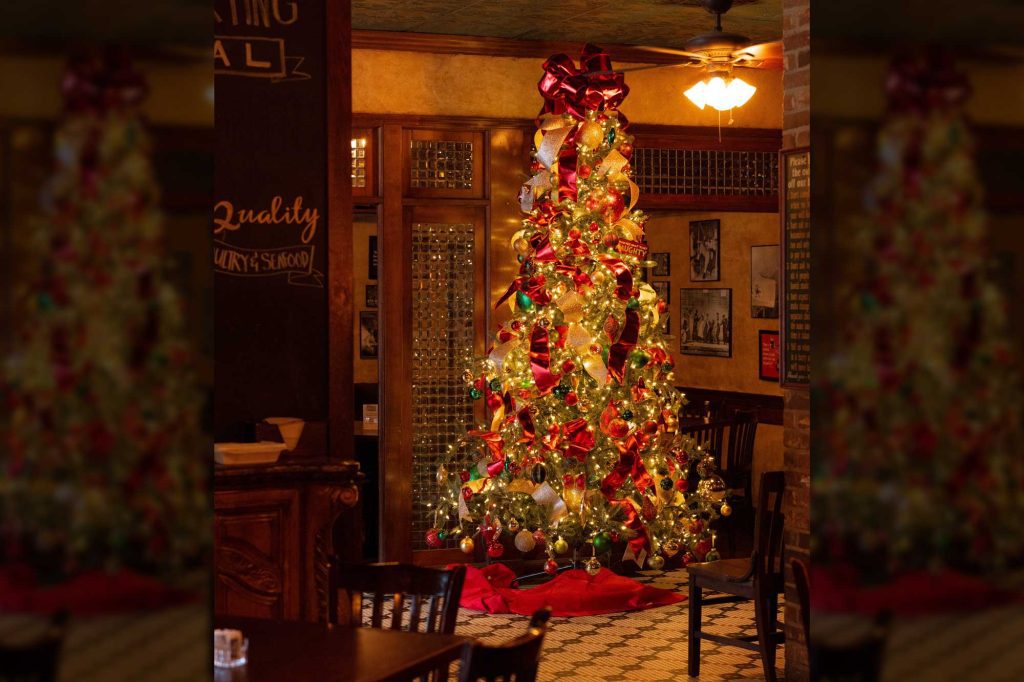Last night, my leadership team gathered for our 37th annual Christmas dinner—a tradition I cherish. It’s a moment to pause, reflect, and thank the incredible hard-working and dedicated people who make everything we do possible. This tradition brings together our leadership team, C-Suite, admin staff, and their significant others for an evening of barbecue ribs and ribeye steaks at Donanelle’s, my favorite dive joint that’s become sacred to our team.
This dinner is where I hand out Christmas bonuses and share my gratitude each year. It’s the prelude to our big annual celebration—the Christmas party for the entire team. That event brings together all 150 team members and their plus-ones for great food, an open bar, a DJ, and dancing. But last night was different.
Last night was about reflecting on a year of transformation.
In the early days, I hosted the leadership dinners at home. I cooked for our small management team and thanked them around my dining room table. Bonuses were modest, and I often skipped mine to make sure the team was taken care of. Over time, we added significant others, brought in kitchen staff to help, and eventually moved to a restaurant. In 2004, we settled at Donanelle’s, and it’s been our spot ever since. The team wouldn’t let us move it now if we tried.
Back then, the challenges were simpler. I juggled it all—branding, menu development, marketing, culture, systems, finances, and training. It worked for a while, but as we grew, my shortcomings became clear.
We’ve weathered tight times—breaking even, scraping small profits, or taking losses—before, during, and after COVID. Looking back, those struggles came down to one thing: my failure to lead effectively. I didn’t build the right team. By trying to do too much, I often did far less.
That approach doesn’t scale. I spent too much time outside my skill set, which pulled me away from where I’m at my best—imaging, branding, marketing, design, menu development, and knowing what the market wants.
The turning point came when I surrounded myself with the right people.
Today, we have a stellar leadership team. Our COO runs systems, management, and culture with precision. Our CFO and CIO handle inventory, forecasting, budgeting, and financials better than I ever could. Our Chief Culinary Officer leads food development, training, and team building with passion and expertise.
They’re far more effective than I ever was alone. Their leadership—alongside our restaurant and office team leaders—ripples through the company, impacting all 400 team members. Building this team took time, but the results speak for themselves.
This year, we hit record sales and profits. More importantly, our culture is thriving again. We’ve got the right people in the right seats. For years, we were blessed to hire A+ candidates. Post-COVID, we were hiring warm bodies, and managing warm bodies is a whole different game. It wasn’t easy.
In 2020, we re-concepted our fine-dining restaurant—a COVID casualty—into a Tex-Mex spot. On opening night, we were 25 people short. We made it work, but it exposed cracks in our foundation. Cracks I’d created by not prioritizing leadership and culture sooner.
Last night, the transformation was clear. Our mission— “We give our guests exceptional experiences through fanatical, wall-to-wall hospitality”— is no longer just a statement; it’s a daily focus. I always believed in it, but I hadn’t communicated it well. The same goes for our core values: hospitality, quality, consistency, cleanliness, and community.Today, they’re not just words—they’re the heartbeat of everything we do.
This cultural rebirth didn’t happen overnight. It took our leadership team, restaurant managers, and every team member who bought into the vision.
Something reignited in me over the past two years. I feel like that 26-year-old again—the one who opened a restaurant on a shoestring budget, lived in a one-room garage apartment until he was 30, worked 90-hour weeks, and paid himself $250 a week just to keep the doors open. I loved every minute of it. Back then, it was the bricks, mortar, and equipment that mattered most.
Now I understand: the team isn’t part of the restaurant. They ARE the restaurant.
Early on, I thought our purpose was simple: prioritize (in order) customers, co-workers, and community. That was in the customer-is-always-right days of the 1980s and 1990s. But a few years ago, I flipped that script. Our purpose shifted to: “We exist to support our team, delight our guests, and serve our community.” Put the team first, and they’ll take care of the guests. It’s a simple truth that’s transformed everything.
We asked ourselves, “What do we need to do to become the best place to work in the restaurant industry in our region?” And we reverse-engineered it from there.
Last night, as I looked around the room, I saw more than a leadership team. I saw people who believed in me when I didn’t always lead them well. I saw a group of individuals who carried us through tough times and helped us come out stronger.
I’ve learned that all business problems are people problems. Conversely, all business successes are people successes. This year’s achievements are a direct result of the incredible team I’m blessed to work alongside every day.
Our next chapter is about growth. We’re expanding, and to do that, we are building our bench. But I have no doubt we’ll rise to the challenge; thanks to the team we’ve built.
To my team: thank you for making us who we are—and who we’ll become.
Onward.




